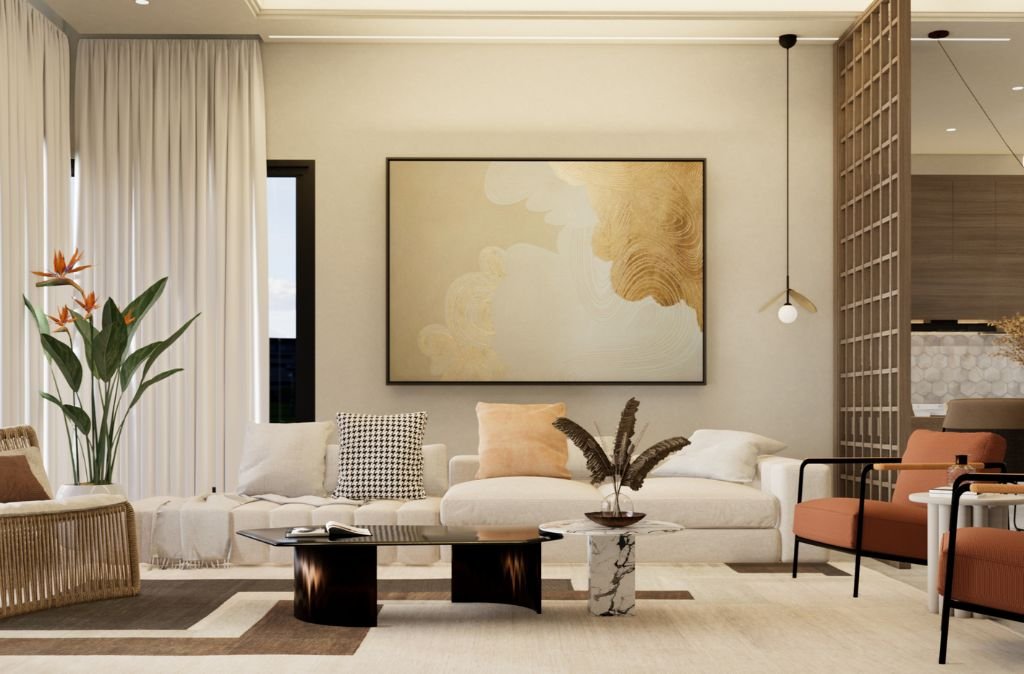
Interior design is more than just arranging furniture or choosing wall colors—it’s the art and science of creating functional, aesthetically pleasing spaces that reflect personal style while maintaining balance, proportion, and harmony. Understanding the rules of interior design ensures that any space, whether residential or commercial, achieves a polished, cohesive look.
In this comprehensive guide, we’ll break down the key principles, design laws, and Interior Decorating Guidelines every homeowner, business owner, or aspiring designer should follow to create stunning spaces.
Understanding the Fundamentals of Interior Design Rules
Before diving into the specifics, you need to understand that interior design rules are not restrictive barriers—they are guiding principles that help you make informed choices. By following Interior Decorating Guidelines, you create spaces that are both functional and visually appealing.
Why Rules Matter in Interior Design
Rules in interior design ensure that spaces are comfortable, proportionate, and harmonious. Without these guidelines, a room may feel cramped, chaotic, or incomplete.
Balancing Creativity and Structure
While creativity is at the heart of design, rules offer a framework that keeps your ideas cohesive. Think of them as a design compass that ensures you stay on track.
Rule 1 – The Principle of Balance in Interior Design
Balance refers to distributing visual weight evenly in a room. This creates a sense of stability and comfort.
Symmetrical Balance
This is achieved by mirroring elements on both sides of a central point. It’s common in traditional interior designs.
Asymmetrical Balance
Instead of mirroring, this approach uses varied elements to create balance—great for modern interior design.
Radial Balance
Elements radiate from a central focal point, often used in luxury interior designs like grand staircases or statement light fixtures.
Rule 2 – Proportion and Scale in Interior Design
Proportion refers to how the size of elements relates to one another, while scale is about how items relate to the size of the room.
Using the Golden Ratio
The Golden Ratio (1:1.618) is a mathematical formula often applied to design for aesthetically pleasing results.
Choosing Furniture that Fits
Avoid oversized furniture in small rooms and too-small pieces in large spaces—it disrupts visual flow.
Rule 3 – Creating a Focal Point
Every room should have a focal point that draws attention, such as a fireplace, statement artwork, or feature wall.
Natural Focal Points
Architectural elements like windows or built-in shelves naturally become focal points.
Artificial Focal Points
You can create a focal point using bold interior décor pieces, lighting, or textures.
Rule 4 – The Power of Color in Interior Design
Color impacts mood, perception, and harmony in a space.
The 60-30-10 Rule
A classic Interior Decorating Guideline where 60% is the dominant color, 30% is secondary, and 10% is an accent.
Understanding Color Psychology
Warm tones create coziness, cool tones promote calmness, and neutrals provide flexibility.
Rule 5 – Harmony and Unity
Harmony ensures all design elements work together for a cohesive look.
Consistent Color Palette
Using a cohesive color scheme ties different rooms together.
Repetition of Design Elements
Repeating patterns, textures, or colors builds unity.
Rule 6 – Functionality is Key
A beautiful space is useless if it’s not functional.
Prioritizing Practical Layouts
Arrange furniture to allow easy movement and access.
Multi-functional Spaces
Modern interiors often require rooms to serve multiple purposes without losing style.
Rule 7 – Lighting in Interior Design
Lighting shapes how we see and feel in a room.
Ambient Lighting
General lighting like chandeliers or ceiling fixtures sets the tone.
Task Lighting
Focused lighting for activities like reading or cooking.
Accent Lighting
Highlights focal points or interior décor details.
Rule 8 – Texture and Pattern in Interior Design
Texture adds depth, while patterns bring character.
Mixing Textures
Combine smooth, rough, soft, and hard textures for visual interest.
Pattern Placement
Patterns should complement, not overwhelm, a design.
Rule 9 – Space Planning and Flow
Efficient use of space makes a home comfortable and stylish.
Open-Concept Layouts
Popular in modern apartments for a spacious feel.
Zoning Techniques
Rugs, furniture, and lighting can define specific areas.
Rule 10 – Personalization and Style Consistency
Your space should reflect your personality while following Interior Decorating Guidelines.
Adding Personal Touches
Family photos, artwork, and heirlooms make a space unique.
Staying True to a Theme
Choose a design style—modern, rustic, or luxury—and stick to it.
Rule 11 – Avoiding Common Interior Design Mistakes
Learning what not to do is just as important.
Overcrowding
Too many elements create chaos.
Ignoring Lighting
A well-designed room can look dull without proper lighting.
Rule 12 – Sustainability in Interior Design
Eco-friendly designs are both stylish and responsible.
Using Sustainable Materials
Bamboo, reclaimed wood, and recycled fabrics are great choices.
Energy-Efficient Lighting
LEDs save money and reduce environmental impact.
Conclusion
Understanding and following the rules of interior design ensures that your space is functional, harmonious, and aesthetically pleasing. By applying Interior Decorating Guidelines and incorporating balance, proportion, color, lighting, and personalization, you can transform any space into a masterpiece. For expert assistance, hiring a professional Interior Design Company in Dubai ensures your vision is brought to life with precision and creativity.
FAQs
Are interior design rules strict?
No, they are guidelines that help create balance and harmony.
Can I mix design styles?
Yes, but they should be blended thoughtfully.
How important is lighting?
Lighting is crucial for mood, functionality, and aesthetics.
Do colors affect mood?
Yes, colors influence emotions and perceptions.
What’s the 60-30-10 rule?
A guideline for distributing colors in a room.
